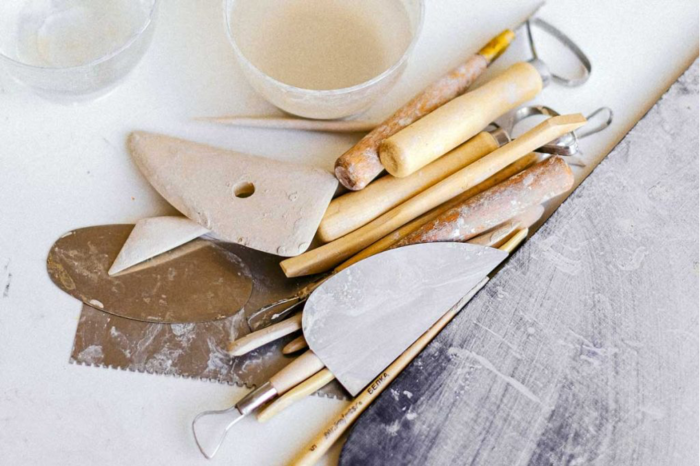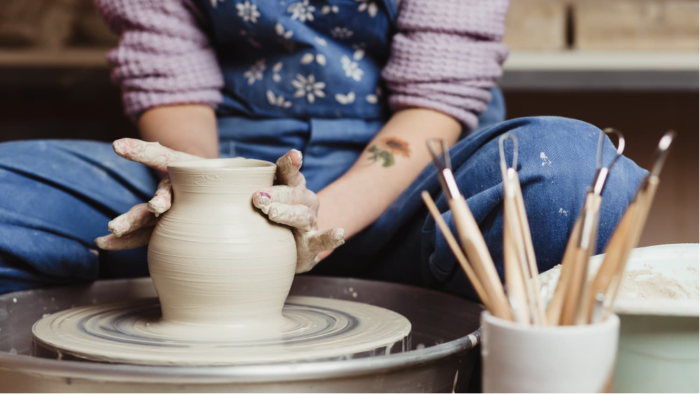
In the world of ceramics, your imagination is your most valuable asset. Yet, even the most vivid imagination needs a set of practical tools to turn dreamy visions into tangible art.
The hands of the ceramic artist may shape the clay, but it’s the instruments in those hands that refine it into a masterpiece. From slabs of clay transformed into intricate sculptures to a mound of clay spinning on a wheel, destined to become an elegant vase, the role of tools is indispensable. Follow this page for more https://www.aerospacemanufacturinganddesign.com/article/should-i-use-ceramic-cutting-tools/.
Here, we’ll dive deeper into the core tools vital to every ceramic artist, from beginners to seasoned professionals.
Clay
Let’s begin with clay, the very medium that breathes life into ceramic art. Selecting the right one is akin to a painter choosing the perfect palette. Earthenware, for instance, is highly malleable and ideal for artists focusing on decorative objects or hand-built sculptures. It’s less sturdy compared to other types and fires at lower temperatures, making it suitable for simpler projects.
Stoneware is an excellent middle-ground clay, being more robust and less porous than earthenware. It can be fired at higher temperatures, giving it durability that makes it ideal for functional pieces like dishware. Porcelain, the prima donna of clays, offers a unique translucent quality but demands a skilled hand due to its delicate and finicky nature. The clay you choose sets the stage for what you can accomplish.
The potter’s wheel
 For those entranced by the rotational allure of wheel-thrown pottery, the potter’s wheel is the heartbeat of their studio. Traditionalists might opt for a kick wheel, a manual device that requires the artist to use their leg to spin the wheel. It’s physically demanding but offers unparalleled control, making it a favorite for those who enjoy a more tactile connection with their work.
For those entranced by the rotational allure of wheel-thrown pottery, the potter’s wheel is the heartbeat of their studio. Traditionalists might opt for a kick wheel, a manual device that requires the artist to use their leg to spin the wheel. It’s physically demanding but offers unparalleled control, making it a favorite for those who enjoy a more tactile connection with their work.
On the other end of the spectrum, electric wheels offer convenience and consistency. They are user-friendly and less physically taxing, allowing artists to focus on form and detail. Regardless of the type, the wheel serves as an extension of the artist’s intent, enabling the transformation of a lump of clay into symmetrically divine creations. Find out more on this page.
Kiln
No ceramic artwork can realize its full potential without the transformative power of a kiln. This furnace is the crucible where clay hardens into a permanent form. Electric kilns are the go-to for many artists due to their ease of use and suitability for smaller spaces.
They are generally limited by size and temperature range, but they’re a convenient choice for those who are starting or have limited space. Gas kilns offer more control over the firing process, allowing for higher temperatures and unique firing techniques like reduction.
The advanced ceramic artist might even venture into the specialized realm of Raku kilns, designed explicitly for the rapid firing process of Raku pottery, a technique that offers dramatic, unpredictable finishes.
Clay cutter
One of the unsung heroes in a ceramic artist’s toolkit is the humble clay cutter or wire tool. It may seem like a simple device, but its importance can’t be overstated. This consists of a taut wire stretched between two handles.
The wire is used to slice through clay blocks, offering a clean and straightforward way to segment your material before molding it. In skilled hands, a wire tool can execute precise cuts for complex projects, turning a cumbersome slab of clay into manageable pieces ready for artistic manipulation.
Wooden modeling tools
Hand-building, an age-old method of shaping clay, has its unique array of essential tools. Wooden modeling tools are invaluable for adding intricate designs and finessing shapes. These tools often have different shaped ends, like flat edges for smoothing and pointed tips for etching.
A metal rib tool, a flat piece of metal with a handle, serves multiple purposes, from smoothing out imperfections to shaping and scraping. Rubber-tipped tools are a revelation when it comes to adding fine details. The various shapes of rubber tips, like cone, cup round, and flat chisel, provide endless possibilities for intricate designs and textures.
You can also check out diamond core tools if you’re curious to discover more!
Texture mats
A piece’s visual appeal can be greatly improved with the use of texture mats or stamps, which often go unnoticed. Artists can add a sophisticated and tactile element to their work by pressing these mats or stamps onto the clay to impart intricate textures.
These texture tools give your ceramics an additional visual and tactile depth, whether you’re going for a geometric pattern or something more freeform.
A few final words
Last but not least, protective equipment, including goggles, dust masks, and gloves should be mentioned because they are essential for avoiding injury from things like clay dust and chemical glaze.
